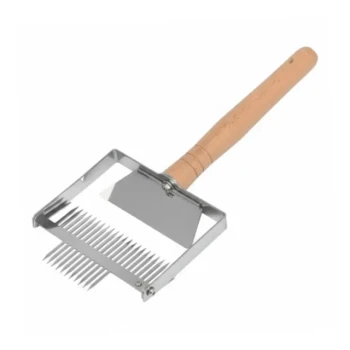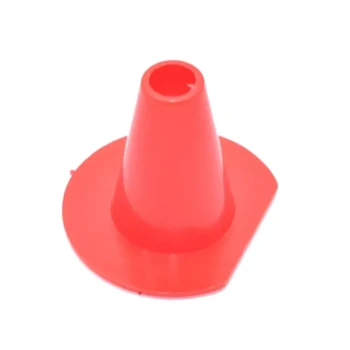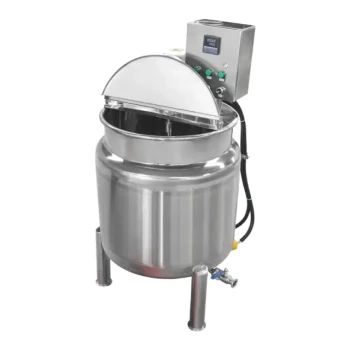In most beekeeping calendars, the queen excluder is removed at the end of the main nectar flow, which directly coincides with your final honey harvest for the season. For many temperate climates, this occurs between late July and mid-August, marking the critical transition from summer honey production to winter preparation.
Removing the queen excluder is not just a step in harvesting honey; it is a fundamental action for ensuring the colony's survival. This allows the bees to consolidate their nest and gives the queen the freedom to position herself correctly within the winter cluster.
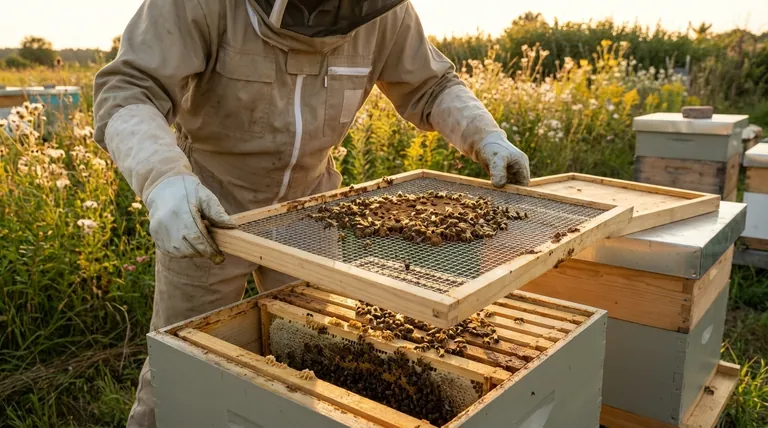
The Role of the Excluder in the Hive's Annual Cycle
Understanding when to remove the excluder begins with understanding why it was put on in the first place. Its presence is directly tied to the productive part of the beekeeping year.
The Excluder’s Summer Job
A queen excluder is a management tool used during a strong nectar flow. Its sole purpose is to confine the queen to the brood boxes, preventing her from laying eggs in the honey supers.
This ensures the supers designated for harvest contain only pure honey, free from brood and pollen.
The End-of-Season Signal
The end of the primary nectar flow is the signal that the hive's focus is shifting. Honey production slows, and the colony's behavior changes to preparing for the colder months ahead.
Removing the excluder at this time aligns your management practices with the bees' natural seasonal cycle.
Why Removal is Crucial for Winter Survival
Leaving a queen excluder on during the winter is one of the most common and fatal mistakes a new beekeeper can make. The colony's ability to survive the cold depends on its freedom of movement.
Facilitating the Winter Cluster
As temperatures drop, bees form a tight cluster to generate and conserve heat, with the queen protected in the center. This cluster is not stationary; it must be able to move.
An excluder acts as a barrier, preventing the colony from moving as a cohesive unit.
Ensuring Access to Food Stores
Over the winter, the cluster slowly moves upward through the hive, consuming the honey stores directly above it.
If an excluder is left in place, the cluster can move up into the honey stores, leaving the queen trapped below. She will freeze or starve, and without her, the colony is doomed.
Preventing a "Split" Cluster
The drive to stay warm and near food is paramount. The worker bees may be forced to abandon their queen below the excluder to save themselves, leading to the certain death of the queen and the eventual collapse of the colony.
Understanding the Trade-offs
While the timing for removal is fairly standard, the decision to use an excluder at all involves weighing its benefits against its potential downsides.
Impact on Bee Movement
An excluder can sometimes slow the movement of bees, creating a "bottleneck" between the brood boxes and honey supers. Some beekeepers find this can inhibit honey storage efficiency or even contribute to swarm preparations if the brood nest feels congested.
Colony-Specific Behavior
Not all colonies are the same. Some bees are meticulous about keeping the brood nest compact, making an excluder less necessary. Others, particularly certain wild or aggressive strains, will have the queen lay eggs anywhere she can find space, making an excluder essential for clean honey harvesting.
The Importance of Observation
The "late July to mid-August" window is a guideline, not a strict rule. The ultimate signal for removal is the end of the nectar flow in your specific location. You must learn to read the signs from your bees and local environment.
Making the Right Decision for Your Hive
Your timing should be guided by the hive's immediate needs and your overarching goals for the season.
- If your primary focus is maximum honey harvest: Remove the excluder only after the main nectar flow has completely finished and you are pulling the last of your honey supers.
- If your primary focus is safe winter preparation: Remove the excluder as you begin to consolidate the hive for winter, ensuring the colony has weeks of mild weather to organize its cluster and stores.
- If you are in a region with a significant late nectar flow: You may choose to leave the excluder on longer, but you must remove it with enough time for the bees to form a proper winter cluster before temperatures drop consistently.
Ultimately, your role is to remove this barrier to allow the colony to function as nature intended for its winter survival.
Summary Table:
| Key Timing | Primary Reason | Risk of Leaving On |
|---|---|---|
| End of main nectar flow (e.g., late July-mid August) | Allow colony to consolidate for winter | Queen trapped below excluder, leading to starvation/freezing |
| After final honey harvest | Facilitate winter cluster movement | Colony unable to access food stores, resulting in collapse |
| Before consistent cold temperatures | Prevent split cluster formation | Worker bees abandon queen, causing colony failure |
Ensure your apiary's winter success with professional-grade equipment from HONESTBEE.
As a commercial beekeeper or distributor, your colony's health directly impacts your bottom line. Proper equipment management is non-negotiable for winter survival and spring productivity.
HONESTBEE supplies durable, precision-engineered beekeeping supplies and equipment specifically designed for commercial-scale operations. Our wholesale-focused approach ensures you get reliable gear that supports efficient hive management throughout the entire seasonal cycle.
Let us help you optimize your operation:
- Commercial-grade queen excluders that balance containment and bee mobility
- Winter-ready hive components that support proper cluster formation
- Bulk pricing that makes sense for your commercial or distribution needs
Contact HONESTBEE today to discuss equipment solutions tailored to your commercial beekeeping requirements.
Visual Guide
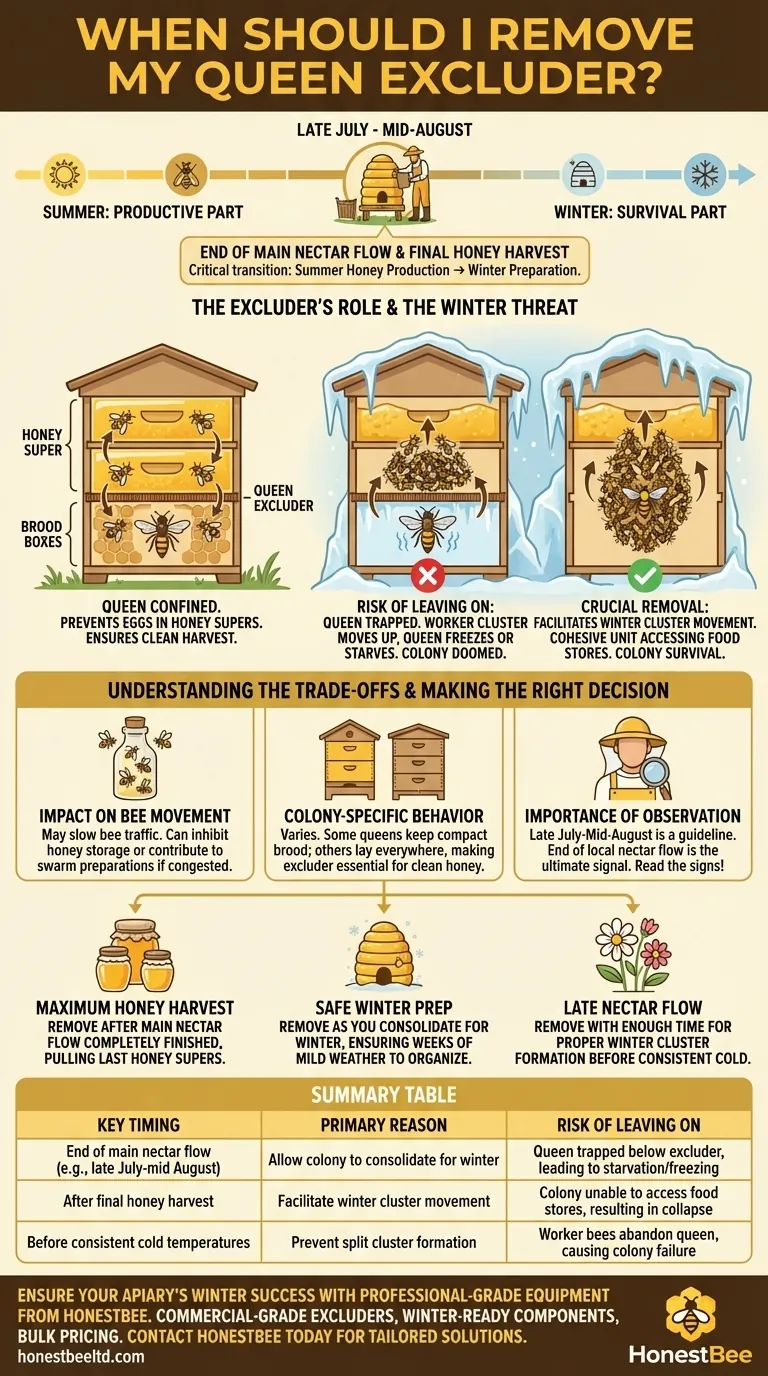
Related Products
- Premium Wood Framed Metal Wire Queen Bee Excluder
- Professional Plastic Queen Excluder for Modern Beekeeping
- High Performance Plastic Queen Excluder for Beekeeping and Apiary Management
- Plastic Queen Bee Excluder for Bee Hive Wholesale
- Stainless Steel Honey Press Wax Press with Tank
People Also Ask
- Can a queen get through a queen excluder? A Guide to Preventing Hive Failures
- Do I really need a queen excluder? A Guide to Maximizing Your Honey Harvest Efficiency
- What is the primary function of a queen excluder? A Guide to Brood-Free Honey Harvesting
- What makes polyurethane foam environmentally friendly? The Surprising Benefits of a Durable, Inert Material
- What is the purpose of a queen excluder? Achieve a Clean Honey Harvest & Organized Hive





